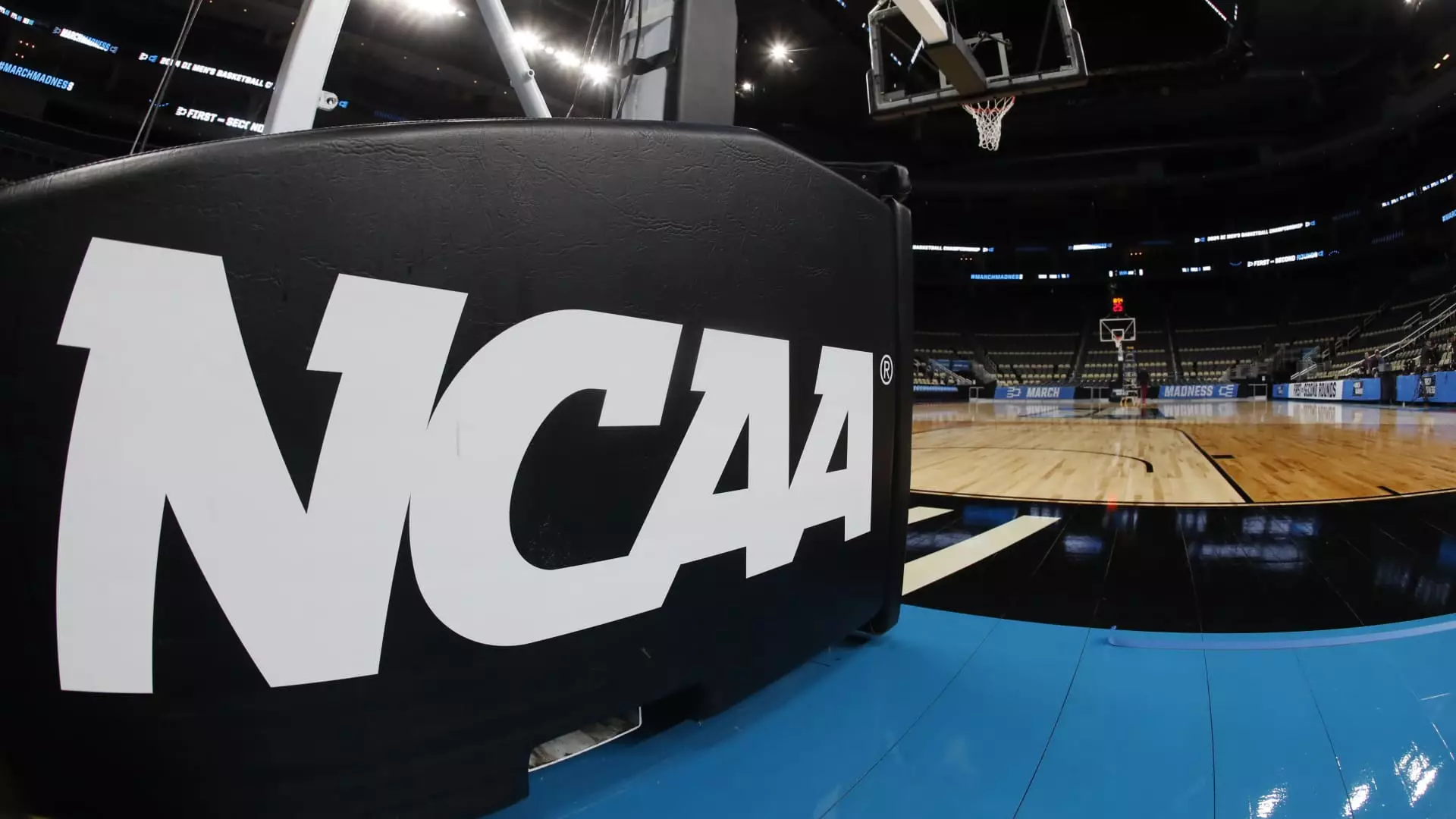In a significant alteration of its regulations, the National Collegiate Athletic Association (NCAA) recently updated its policy regarding transgender student-athletes. This change categorically prohibits trans women from competing in women’s sports categories, a move that coincided with President Donald Trump’s declaration imposing federal funding restrictions on educational institutions that permit such participation. The ramifications of this policy adjustment are profound, stirring debate over inclusivity, equality, and the nature of gender identity in competitive sports.
The NCAA’s revised guidelines stipulate that while students designated as male at birth may train with women’s teams and access related medical benefits, they are barred from formal competition. Conversely, any student, irrespective of gender or sex, may participate in guys’ teams, although those undergoing testosterone therapy must navigate a medical exemption protocol. The policy also imposes restrictions on female athletes engaging in testosterone supplementation or hormone therapy from partaking in women’s sports. This rollback from earlier guidelines reflects a stark departure from the NCAA’s prior practice of aligning with Olympic standards for trans athlete eligibility established in January 2022.
NCAA President Charlie Baker articulated the organization’s rationale for this policy shift, emphasizing the need for a consistent and uniform standard that transcends the fragmented state laws and varying judicial decisions concerning transgender participation in sports. Baker suggests that such a standard aims to uphold the integrity of collegiate athletics while ensuring a level playing field for all athletes. However, this perspective raises critical questions about fairness and the underlying motivations that guide these institutional decisions.
The broader political milieu significantly influences the NCAA’s recent maneuver. President Trump’s executive orders—which classify gender strictly within a binary framework—demonstrate an ongoing attempt to solidify a traditional understanding of gender within federal policies. Critics argue that this stance dangerously oversimplifies the complexities of gender identity and undermines the existence of non-binary and trans individuals. Notably, Trump’s previous executive orders banning transgender individuals from military service set a precedent that echoes through this updated NCAA policy, highlighting a troubling trend of marginalization under administrative directives.
Prominent figures in the transgender community, such as triathlete Chris Mosier, have articulated their opposition to the NCAA’s new rules, suggesting that they not only discriminate against trans women but also disregard the realities faced by many athletes. Mosier posits that constructing gender as a strict binary ignores the multifaceted nature of gender identity and presents an inadequate representation of human experiences. The NCAA’s stance has elicited critical responses from organizations like GLAAD, who argue that these directions are regressive and not substantiated by scientific, medical, or human rights standards that previously informed NCAA policies.
Consequences for Athletes and the Community
The implications of the NCAA’s new policy extend far beyond the confines of athletic fields. Transgender and non-binary athletes face potential isolation and a lack of opportunities for participation, essential for both personal growth and community acceptance. Furthermore, the policy may inadvertently affect intersex individuals and those requiring hormone treatments for medical issues. The shadow of this policy casts doubt on the NCAA’s commitment to fostering an inclusive environment that embraces diversity across the athletic spectrum.
The NCAA’s updated policy is a controversial attempt to navigate the complexities of gender in sports while acknowledging external political pressure. Nonetheless, this development has drawn fire from advocates who challenge the exclusionary nature of such regulations. It calls for a thorough reevaluation of how sports organizations can balance fairness with inclusivity, thus ensuring that all athletes—regardless of their gender identity—can pursue their passion on equal footing. As society continues to grapple with these issues, the evolving conversation surrounding inclusivity in athletics demands a more compassionate and nuanced understanding of gender identity.

